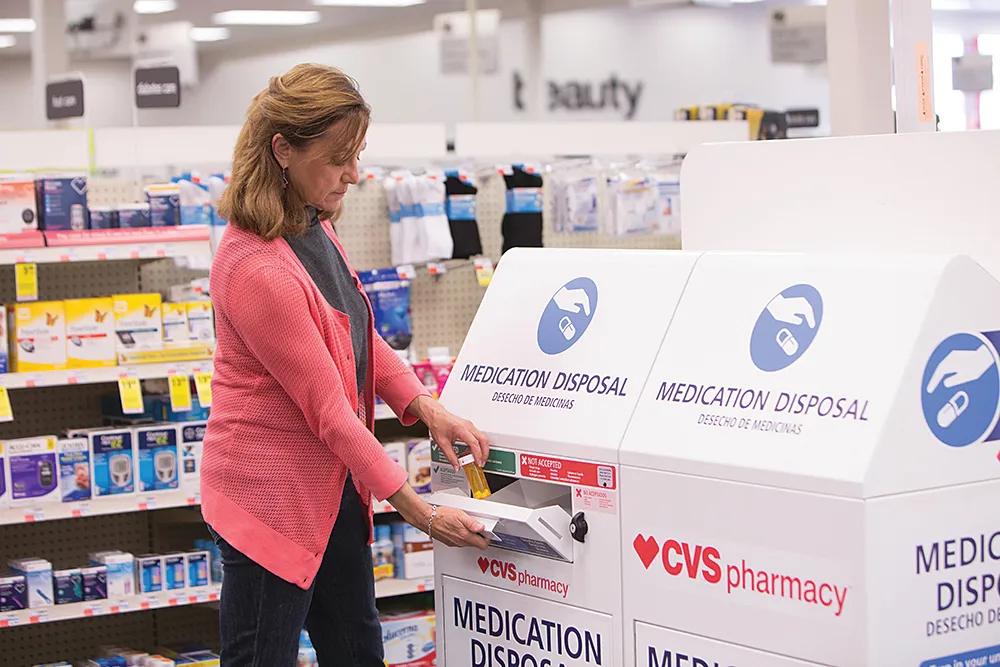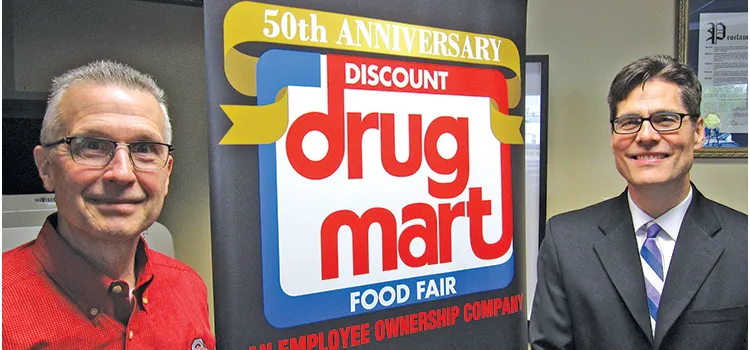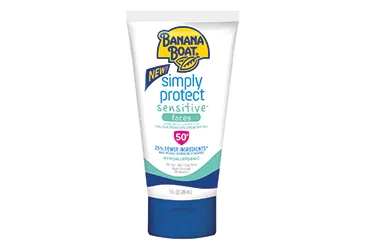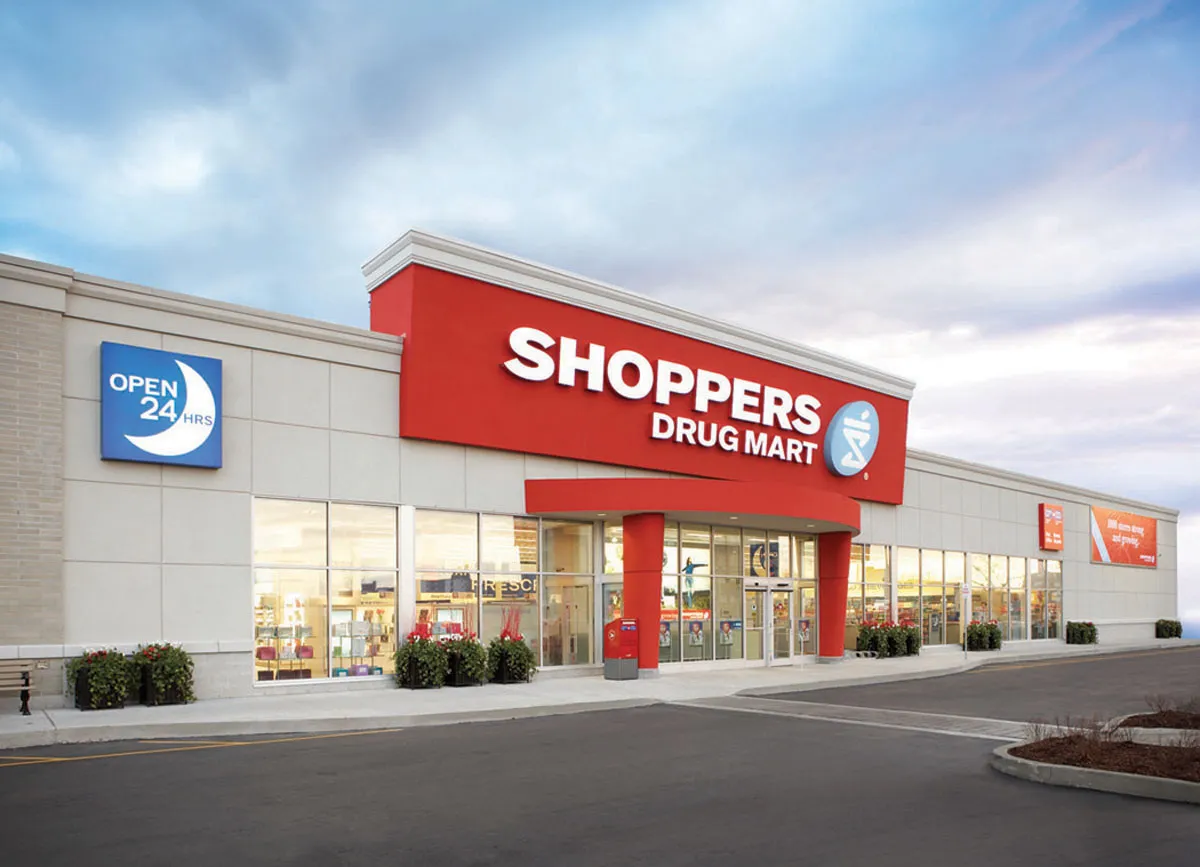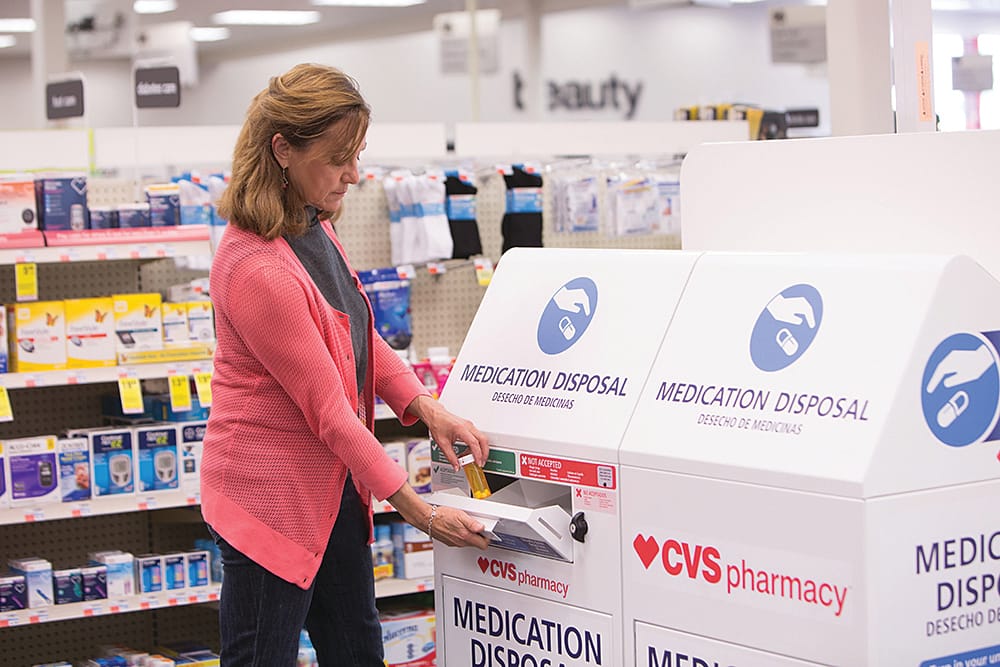
CVS is one of many chains that offer drug take-back facilities
Chain drug retailing has thus far largely escaped the repercussions of the opioid epidemic, an ongoing tragedy which has seen so many people become addicted to pharmaceutical products that, when taken as prescribed and properly managed, can bring needed relief to patients with serious illnesses or injuries. Several of America’s most prominent pharmaceutical houses have thus far become entangled in fallout from the crisis, and the wholesale drug industry has also come in for a share of the blame. Retail drug stores, by contrast, have thus far largely escaped blame.
This cannot go on indefinitely. As those with even a rudimentary knowledge of the way prescription drugs reach the consumer in America know, the retail component is key to that distribution pattern. Drug stores, both chain and independent, are a major conduit on the route from drug manufacturers to the consumers who ultimately use their products.
This question, therefore, emerges: What can or should retail pharmacy do to immunize itself from future allegations that it too must bear a portion of the blame — and the consequences — for an epidemic that threatens the mostly unblemished reputation it has enjoyed for so many years?
A retail pharmacist is, no doubt, in a difficult position when a patient presents a prescription from a licensed physician for a legal health care product. Making an on-the-spot judgment about whether the patient needs an opioid medication to maintain their well-being, might inadvertently become addicted or is already a drug abuser is an unenviable job. But few retail pharmacists today can continue to claim ignorance about an epidemic that threatens the very foundation of the drug distribution system that has worked effectively for so long.
Although attempts to stem the tide of opioid abuse have intensified considerably, the problem is that a definitive solution has so far eluded the grasp of our industry’s brightest and most creative thinkers. Retail drug store leadership has thus far been only partially effective in tackling an issue that becomes more ominous by the day. In addition, the rules and laws designed to reduce the opportunities for limiting the distribution of potentially dangerous medications to only those consumers who really need them have thus far been largely ineffective.
Bolder action is called for. Whether that action ultimately comes from our trade associations, which generally get high marks when it comes to policing our industry, or joint action by the industry leadership, also largely effective in the past, remains to be determined. Industry leadership, which in conventional terms includes such drugs chains as Walgreens and CVS, such discounters as Walmart and Target, and such grocery retailers as Kroger, Albertsons, H-E-B, Hy-Vee, Publix, and several others, is stronger and more firmly entrenched than ever. For added leverage, the leading online pharmacy retailers might also be called on to play a role in the battle against opioid abuse.
Walgreens is one of the retailers that has stepped to forefront. Late last month the company announced that its safe drug disposal program is now up and running in all of its 9,500 pharmacies across the country. All Walgreens locations that do not have disposal kiosks for unwanted medications (which now total 1,400) offer DisposeRx packets or other medication disposal options to customers who ask for them.
Year-round programs like the one at Walgreens supplement the industrywide National Prescription Drug Take-Back Day, which this year was held at the end of April. The goal of those initiatives and others like them is to prevent unneeded medications from being misused or diverted.
NACDS is helping the industry make progress on the legislative front. The association’s recommendation that initial fills of opioid prescriptions be limited to a seven-day supply is a central pillar of the John S. McCain Opioid Addiction Prevention Act, a bill that is garnering widespread bipartisan support as it moves through Congress.
Such efforts are laudable, but clearly the time has come for retail pharmacies and their partners in related fields to play a much bigger role. Too much is at stake to do otherwise. Indeed, it is not too great an exaggeration to make the claim that the future of retail pharmacy, as that art and science are practiced today, hangs in the balance.

